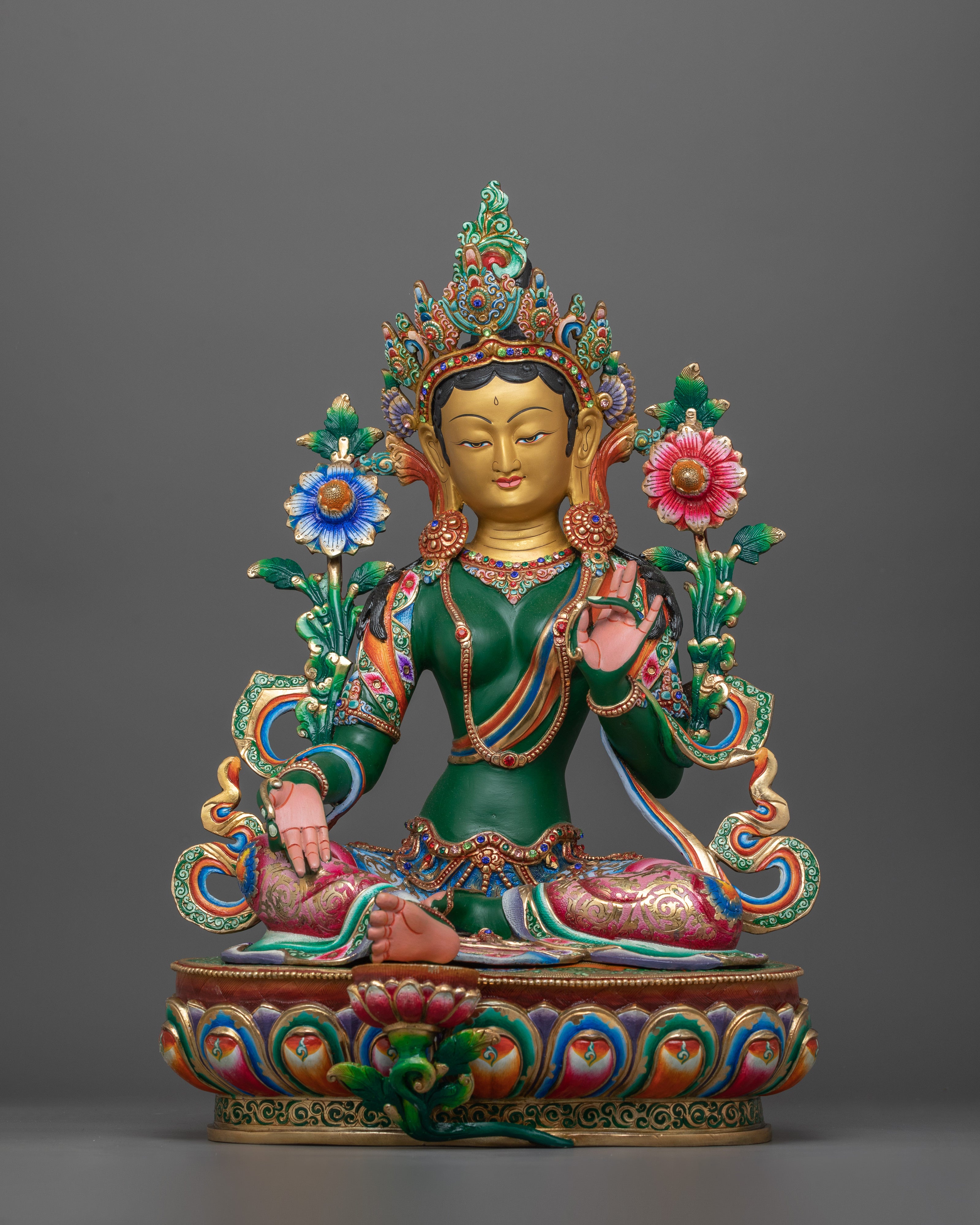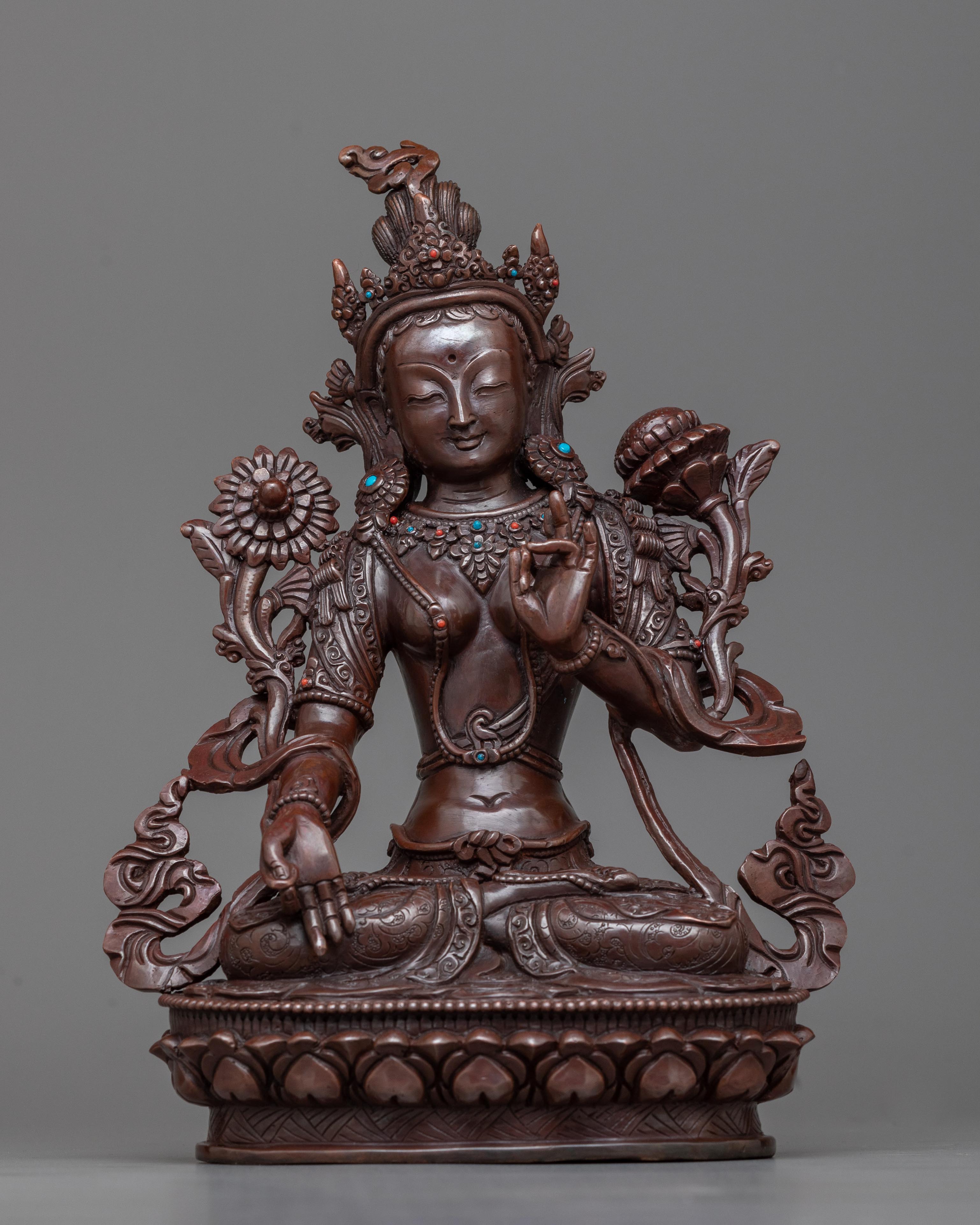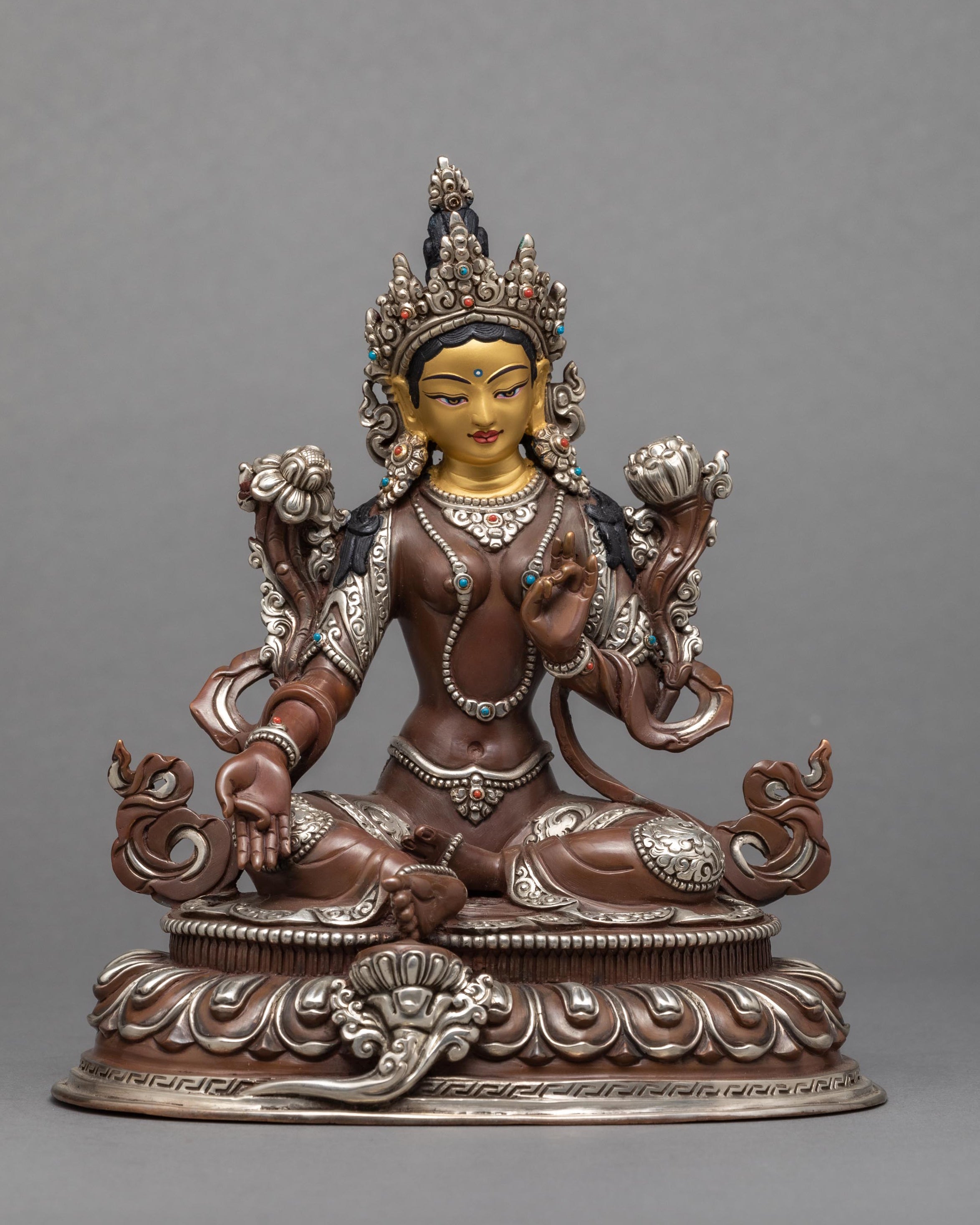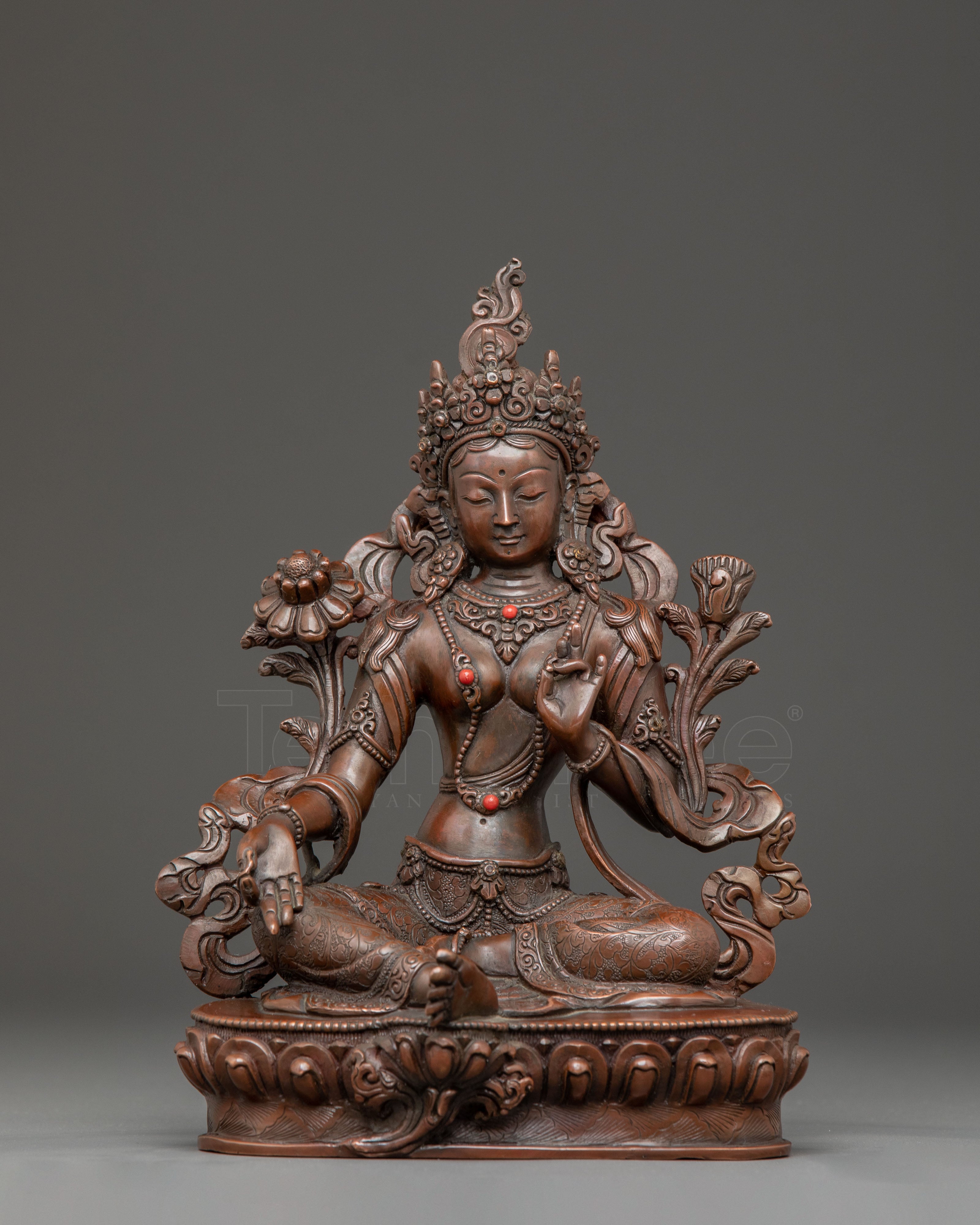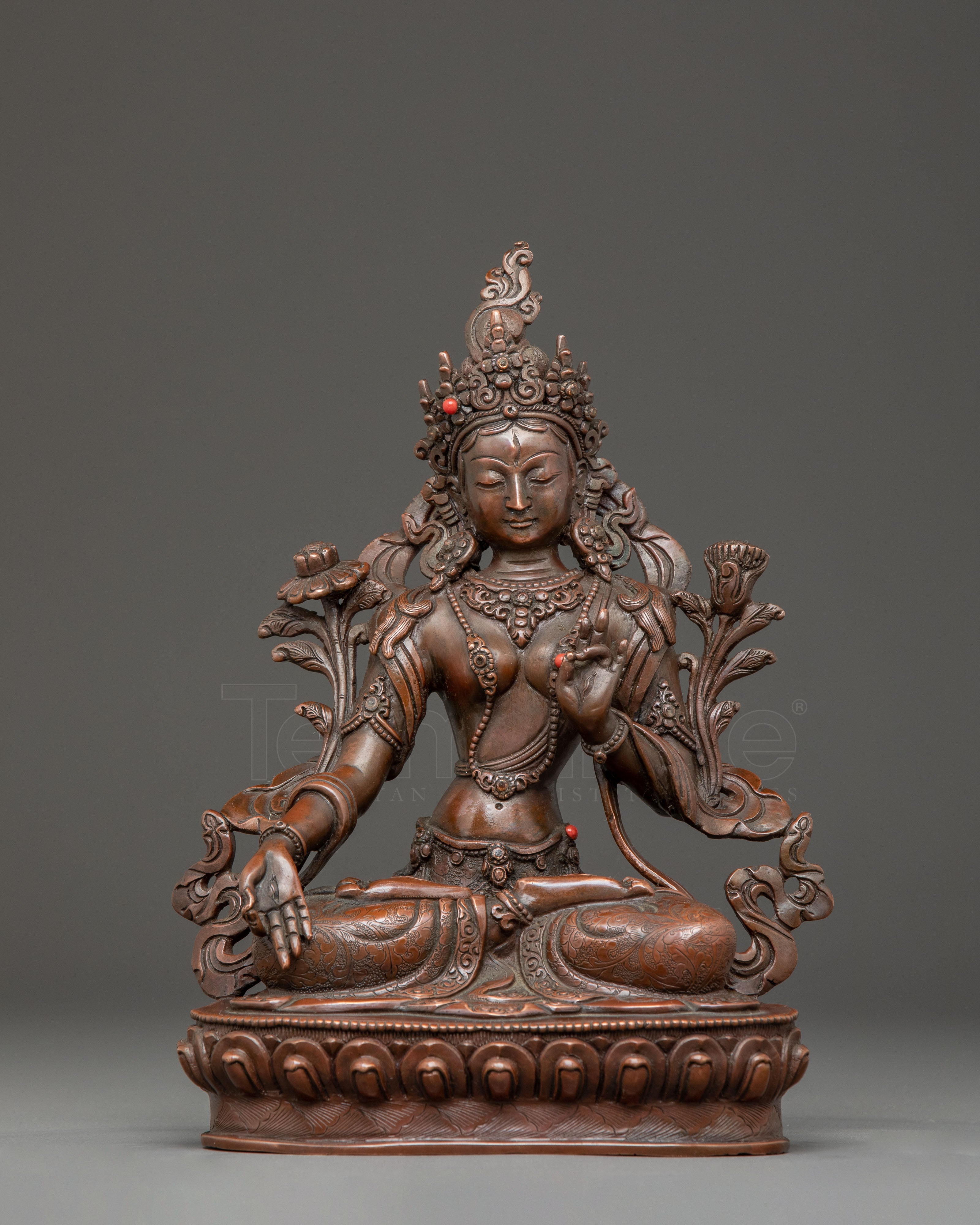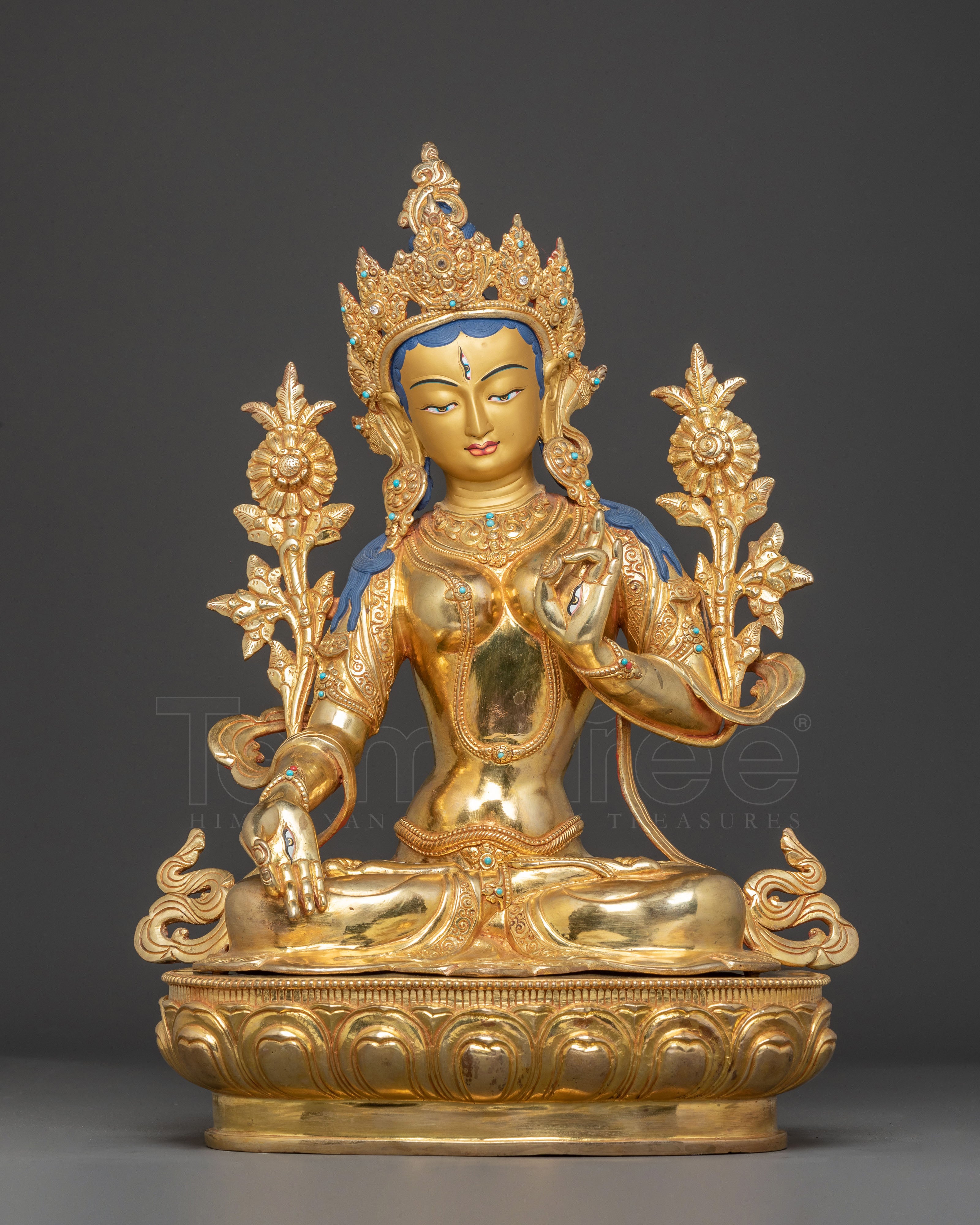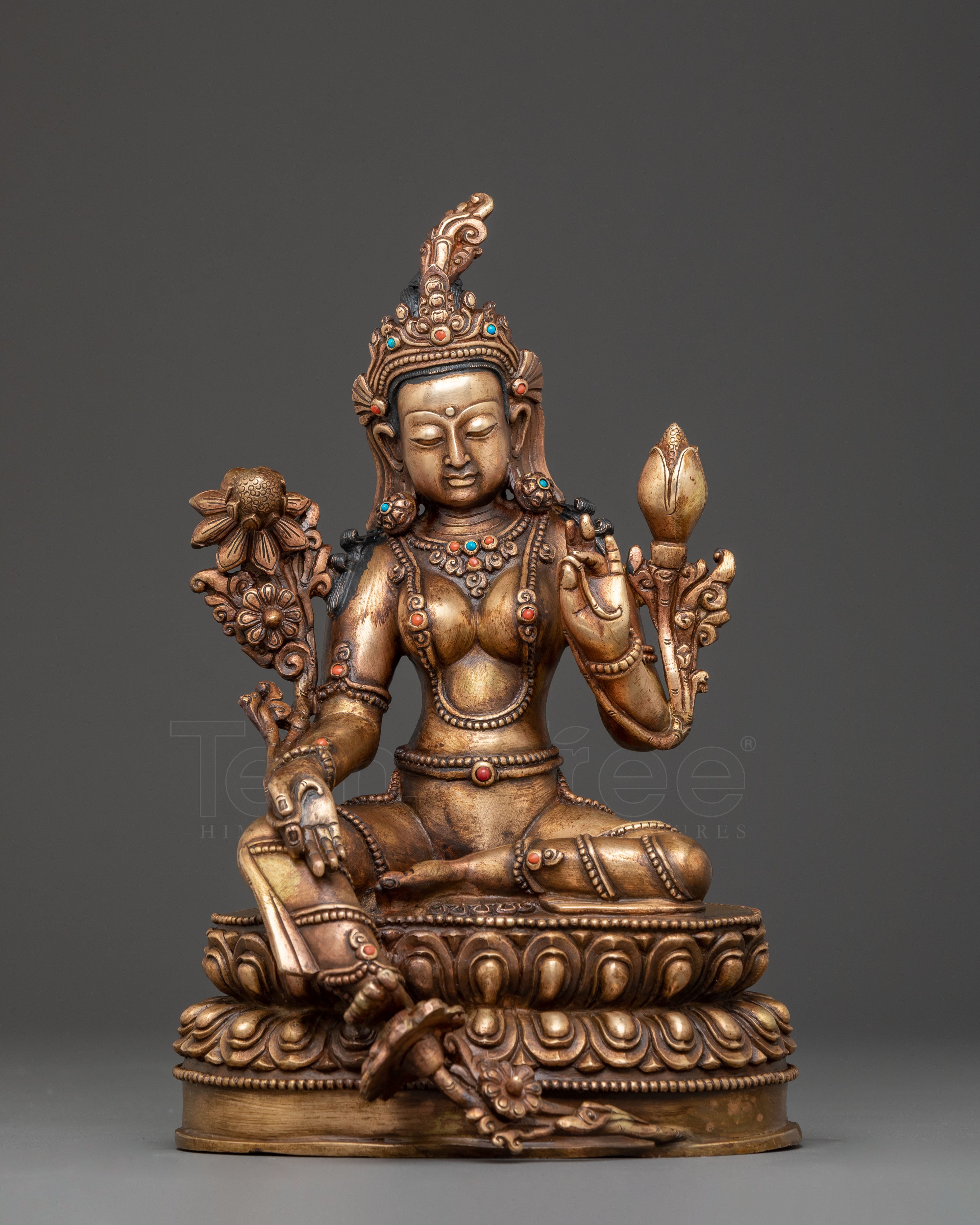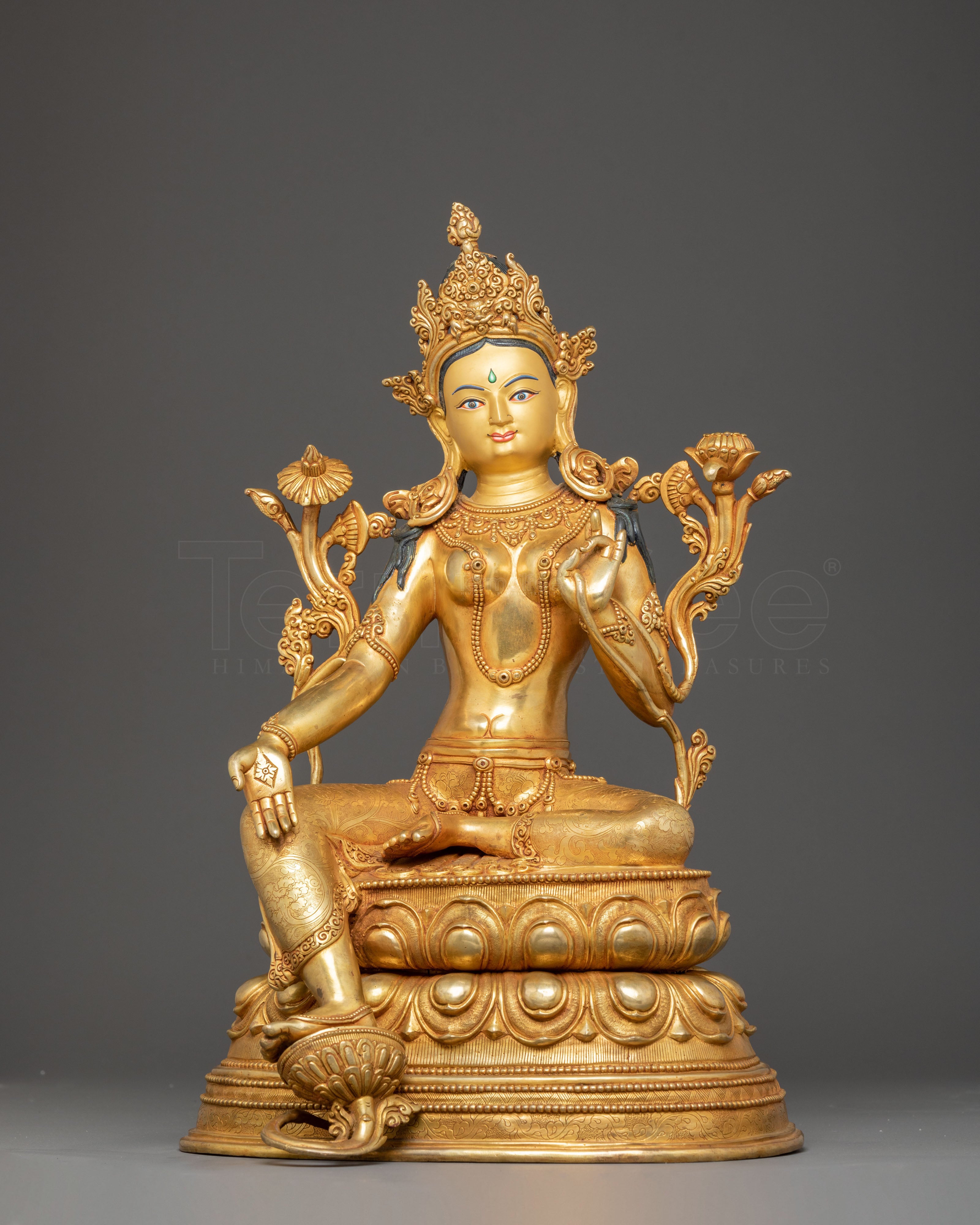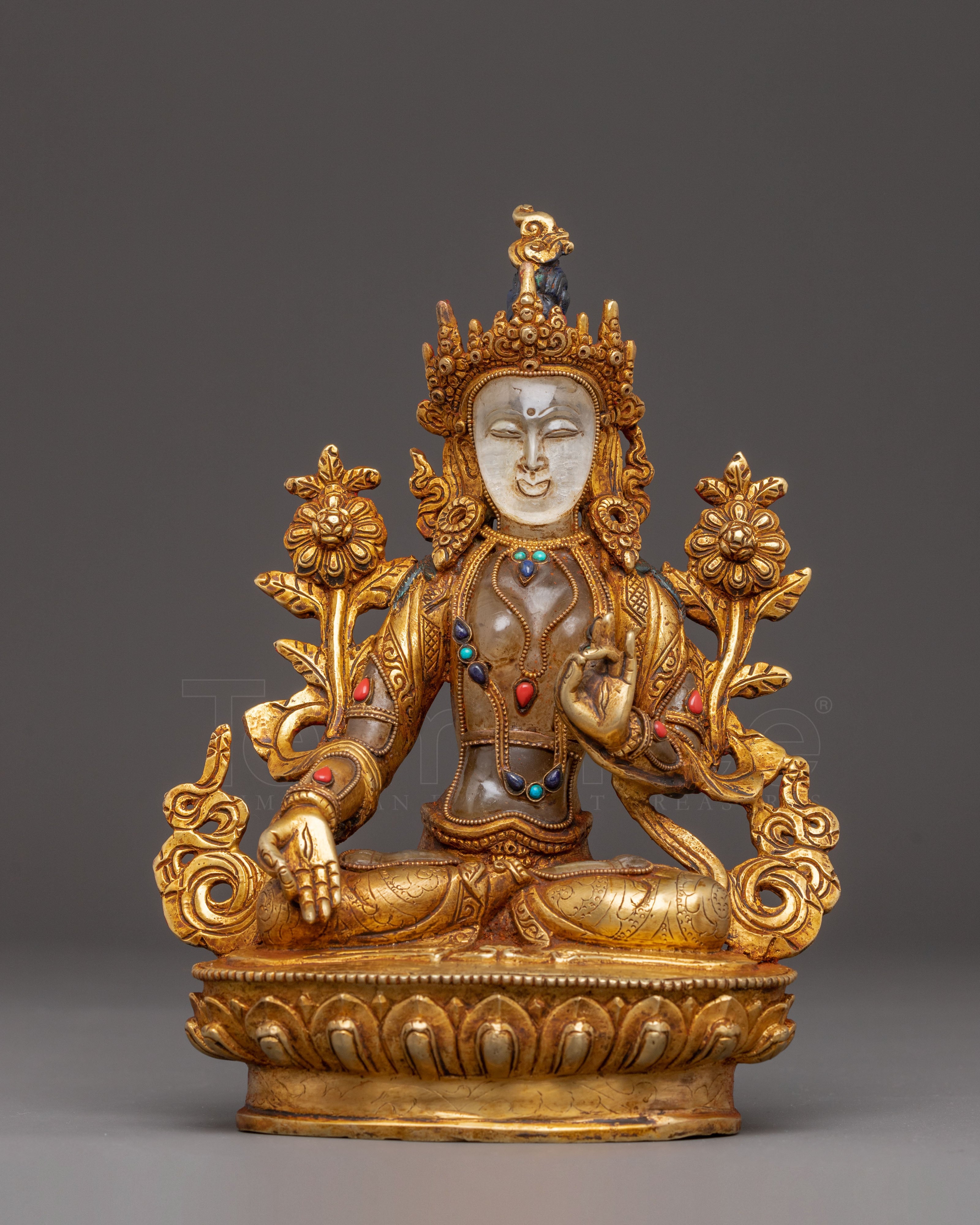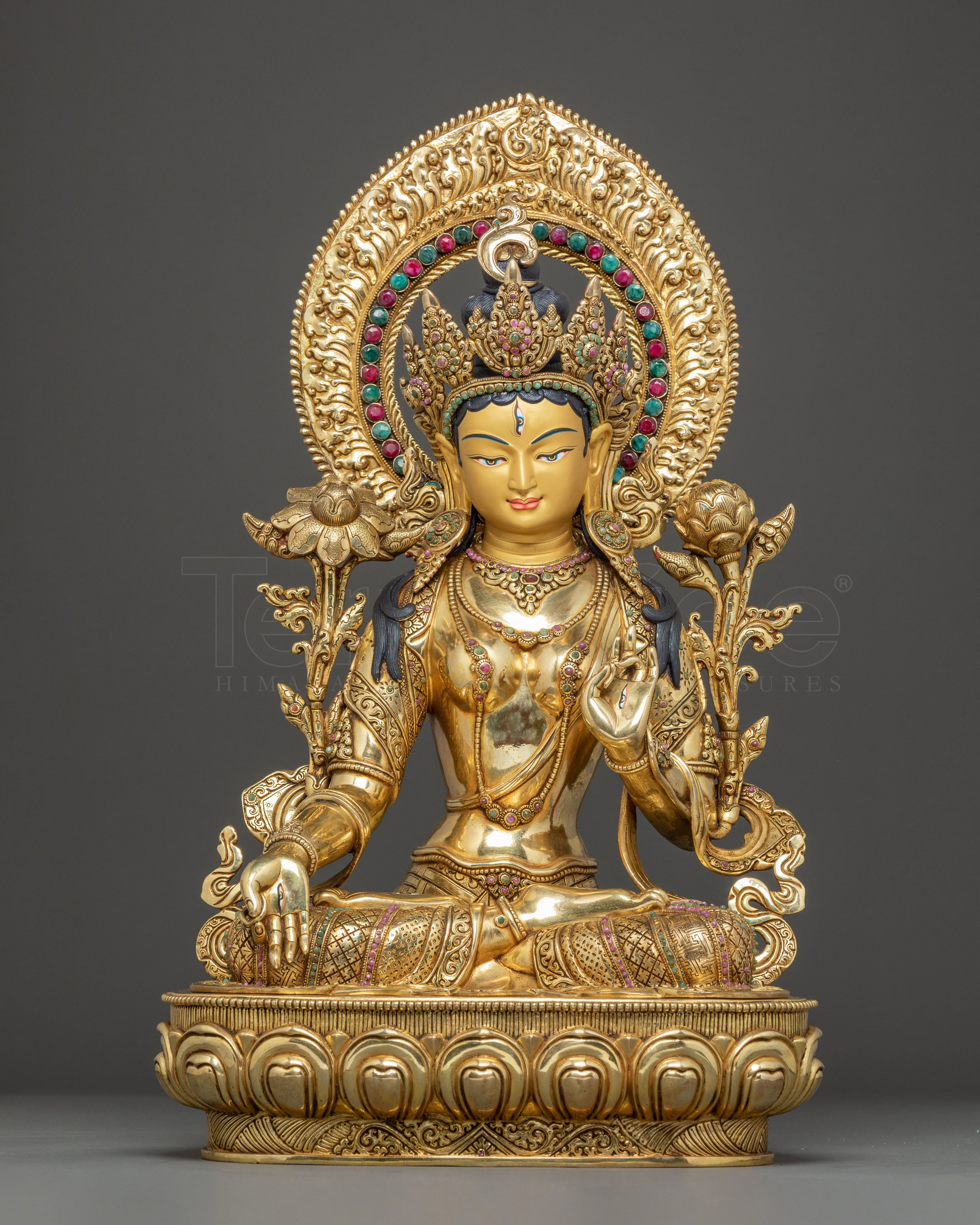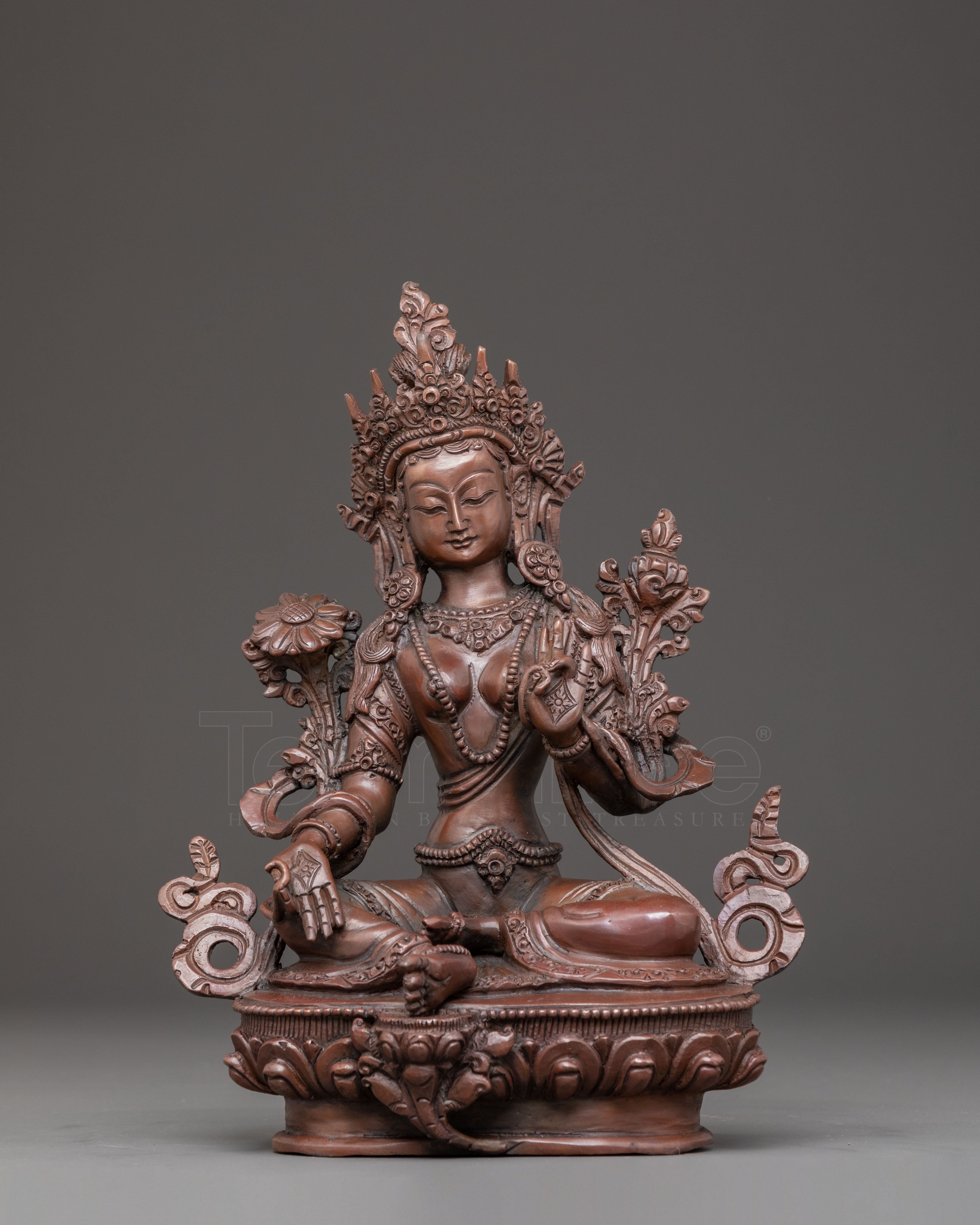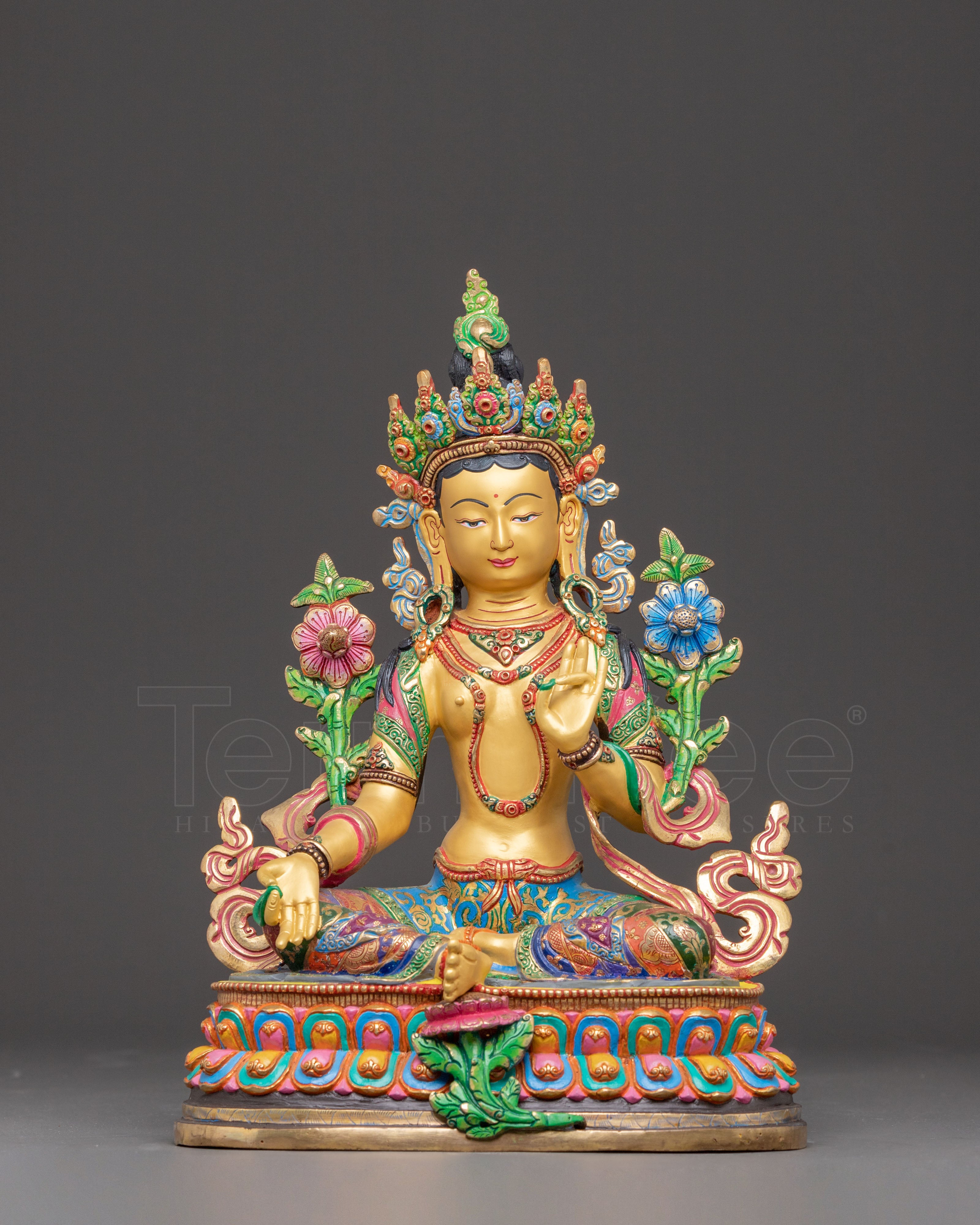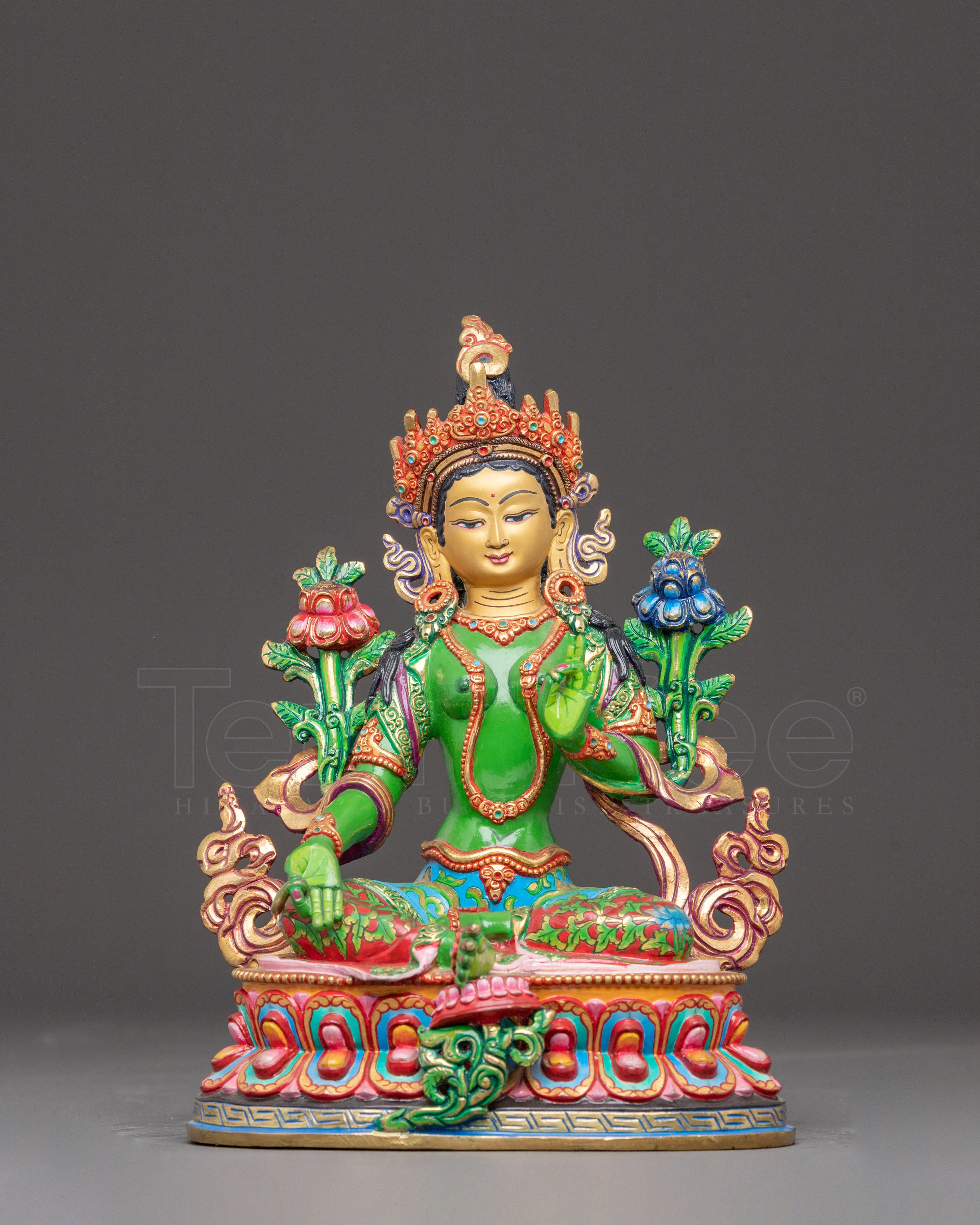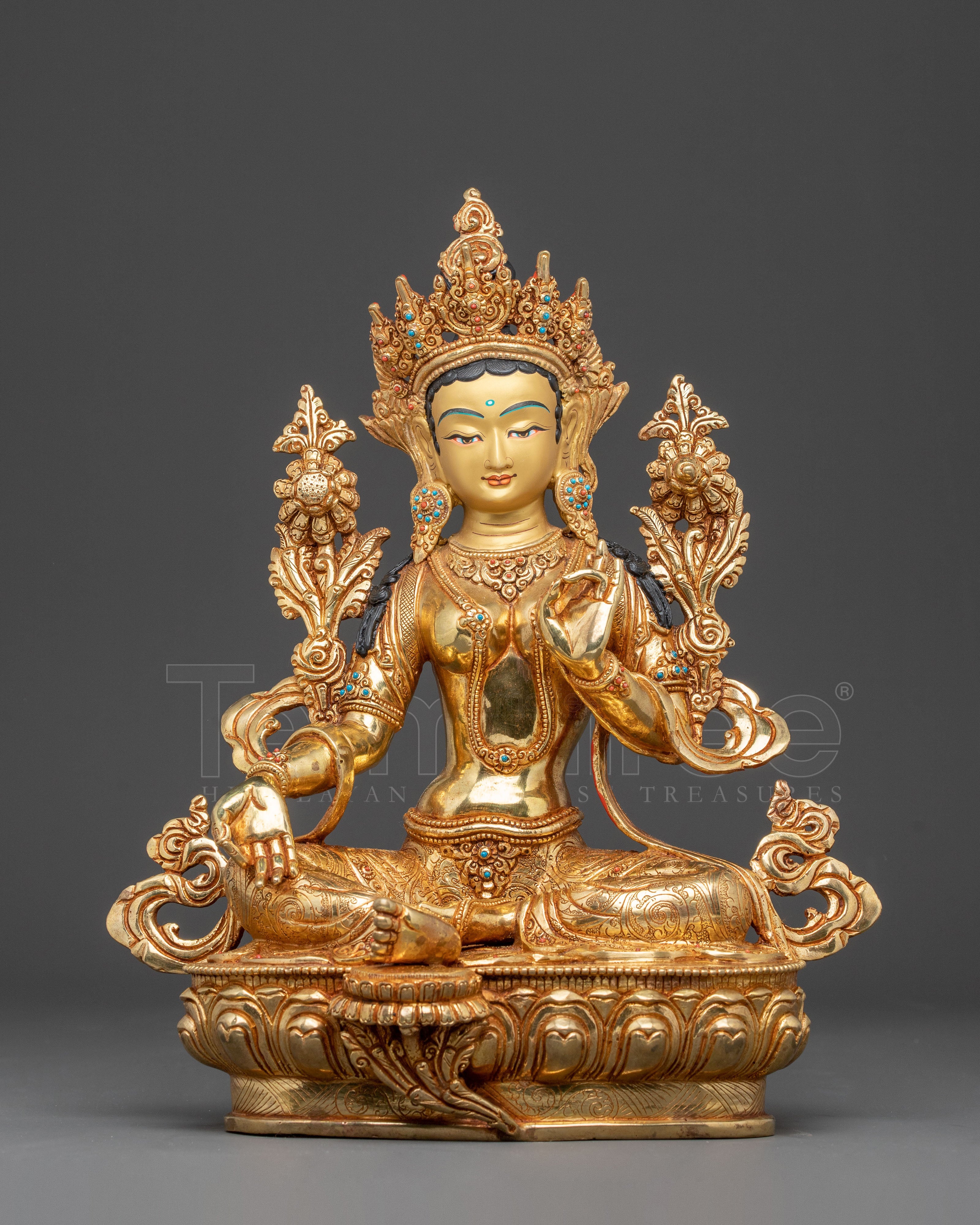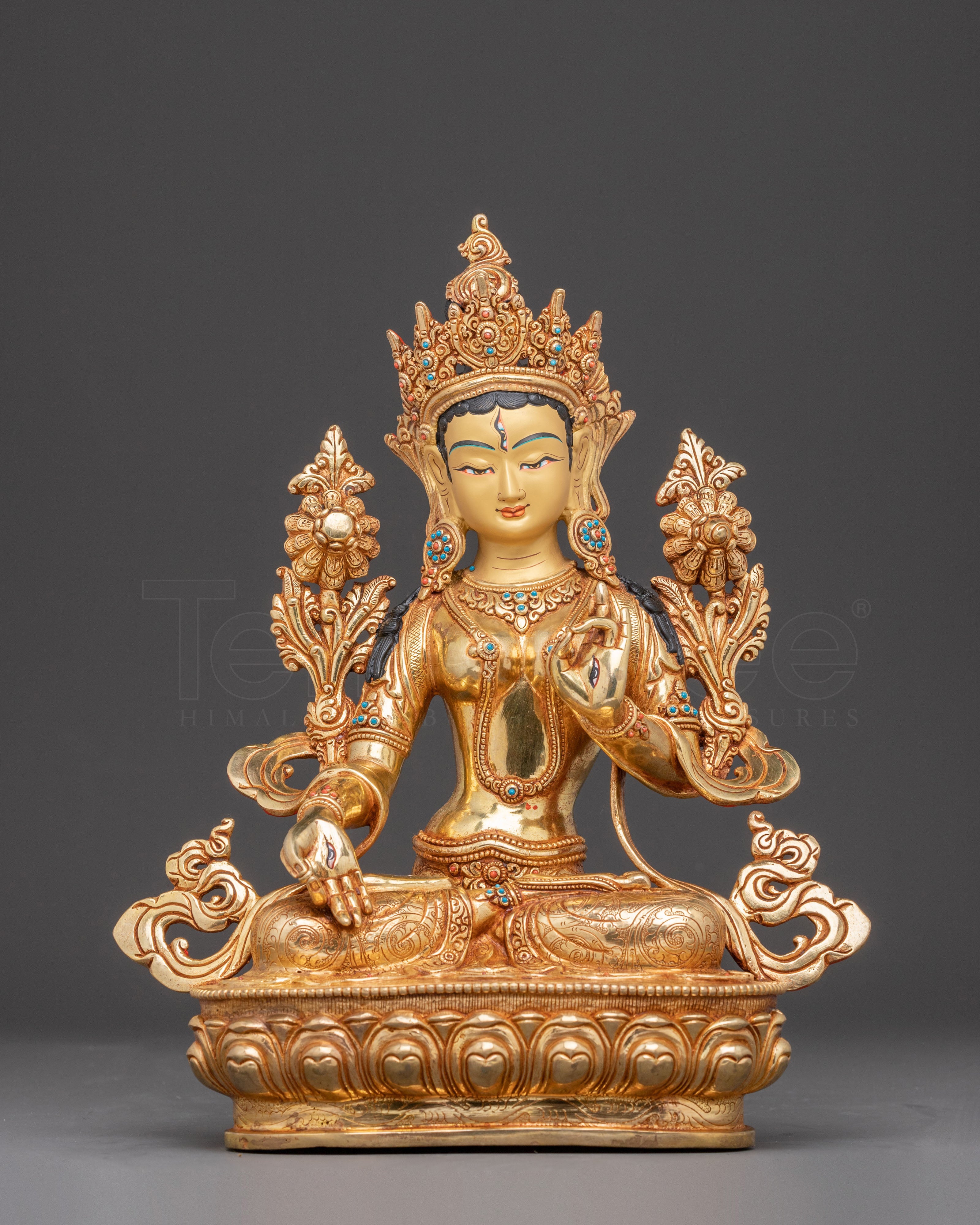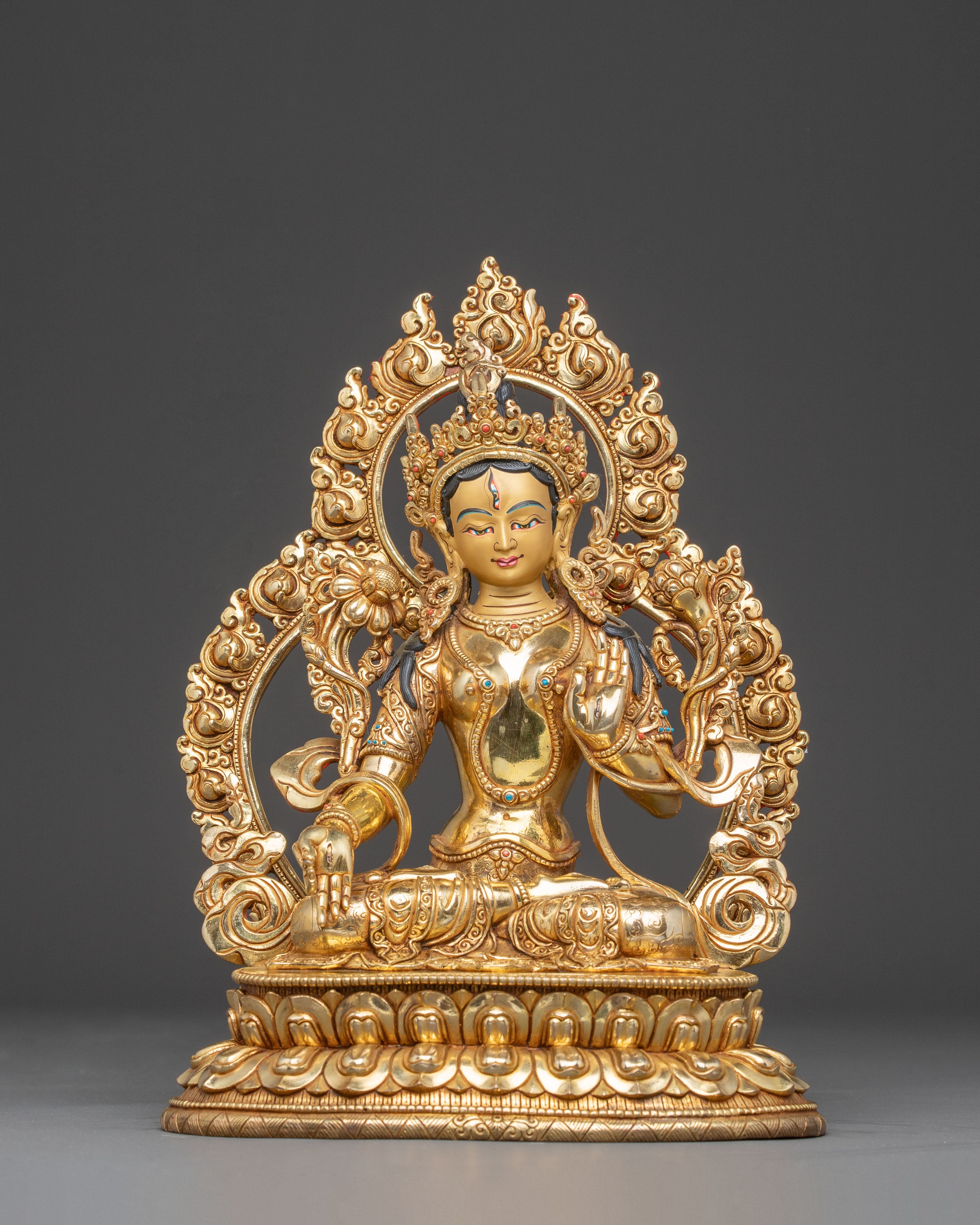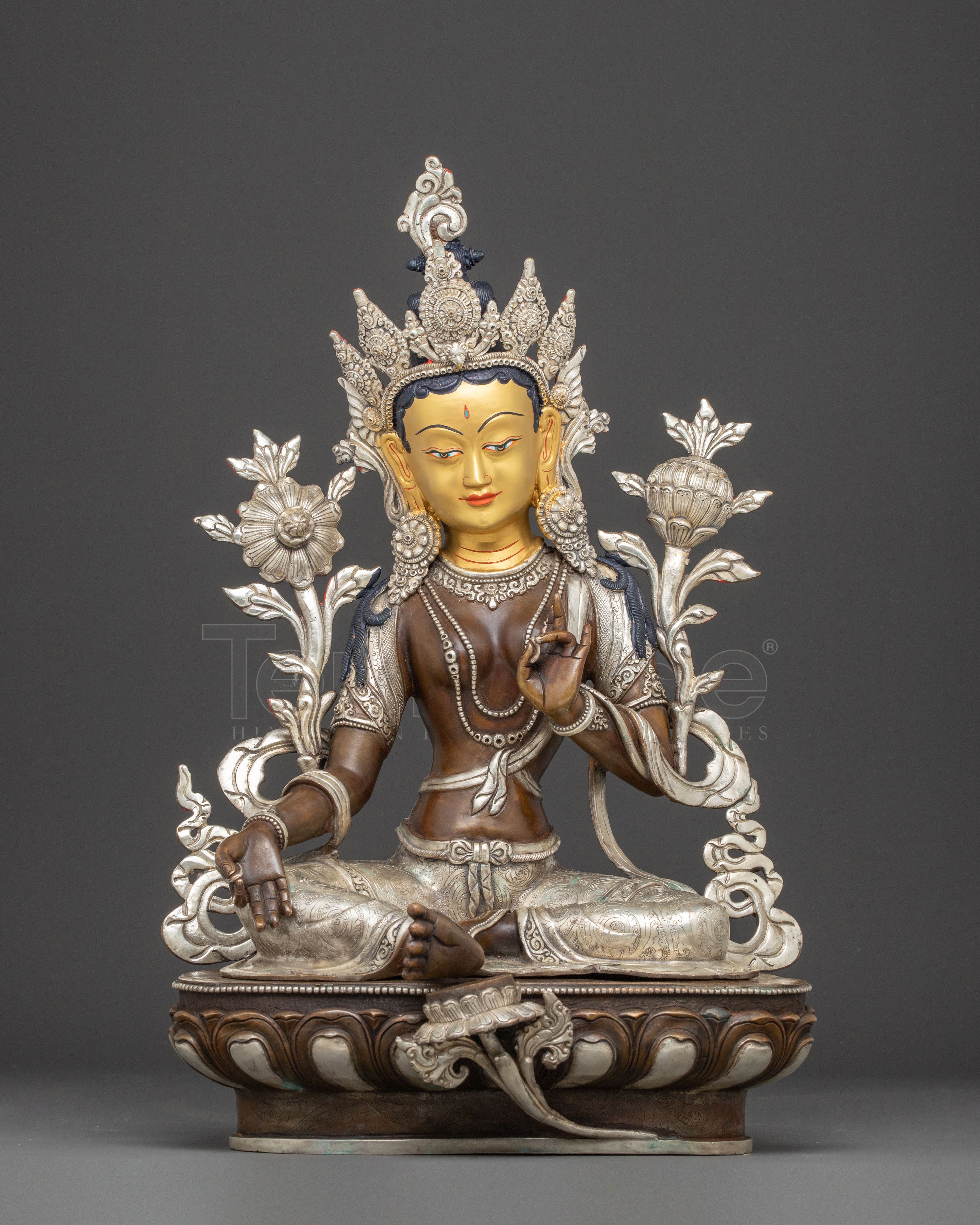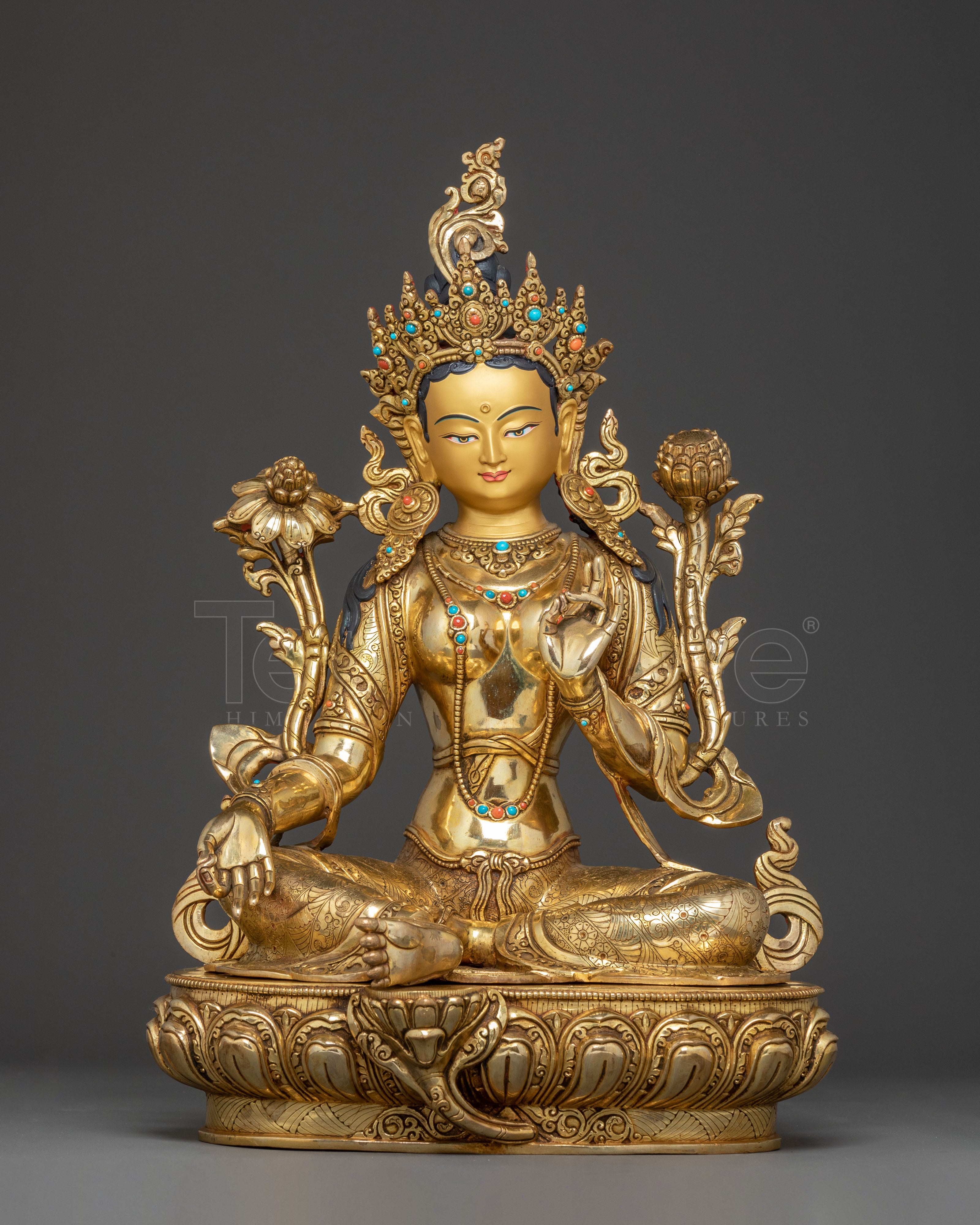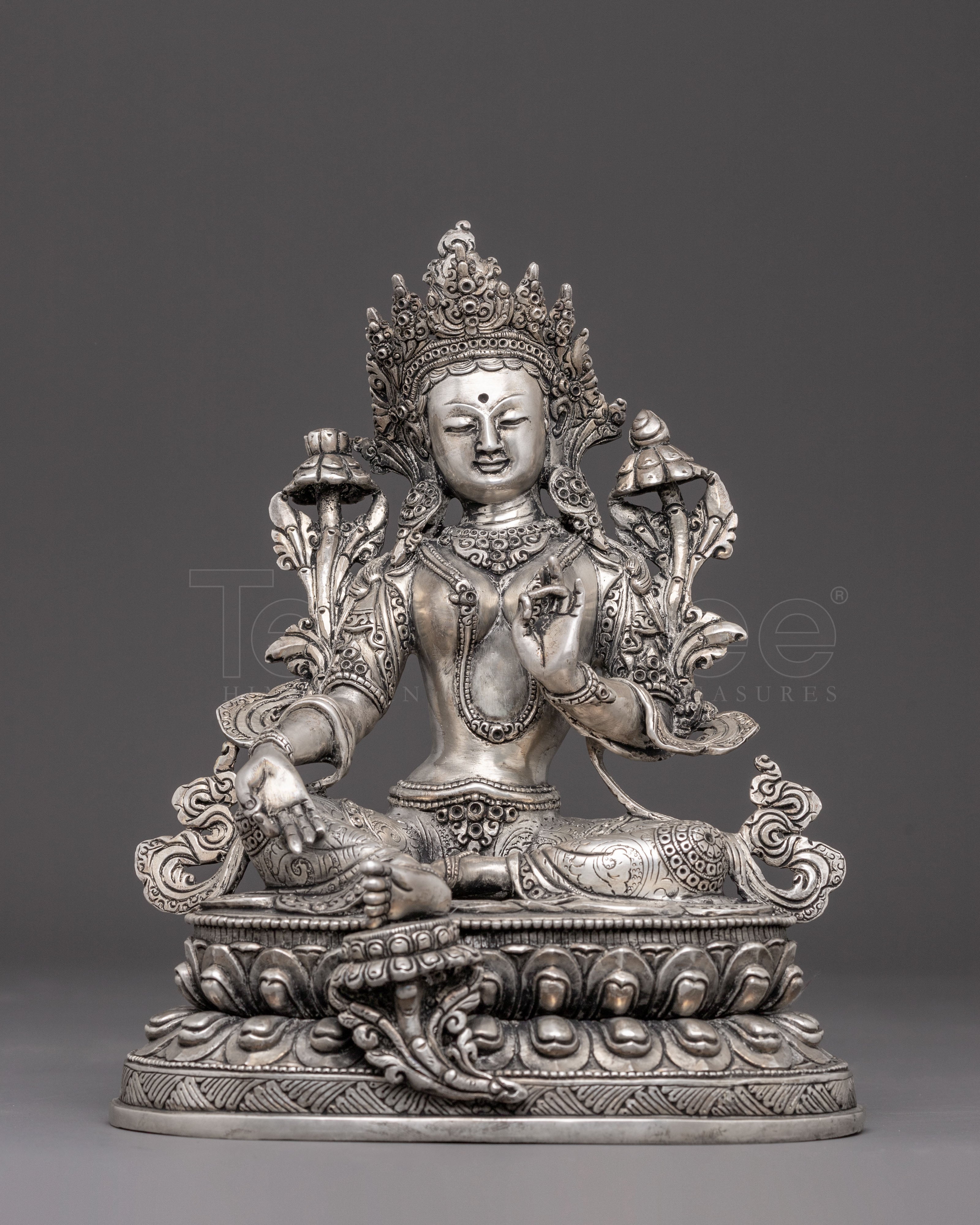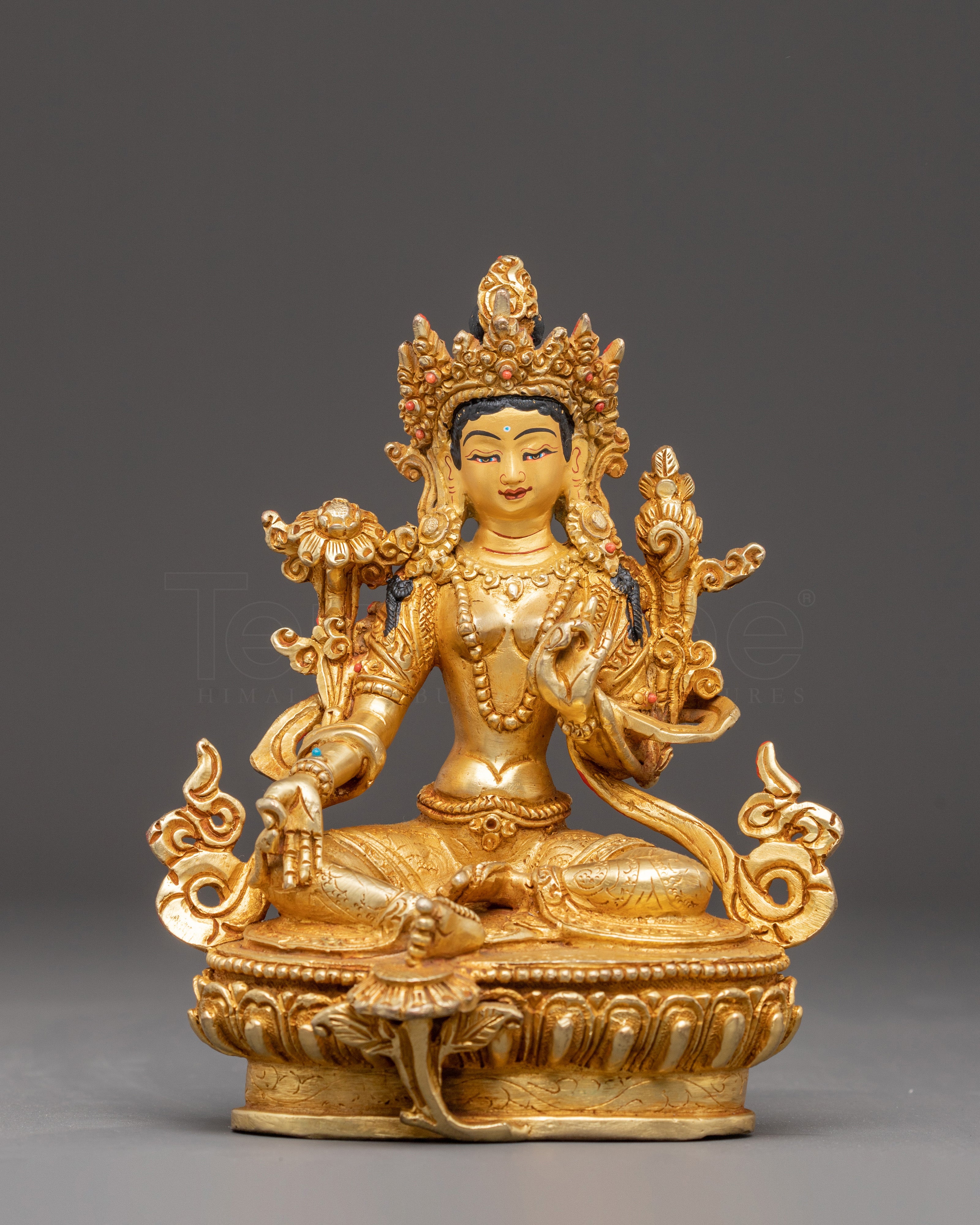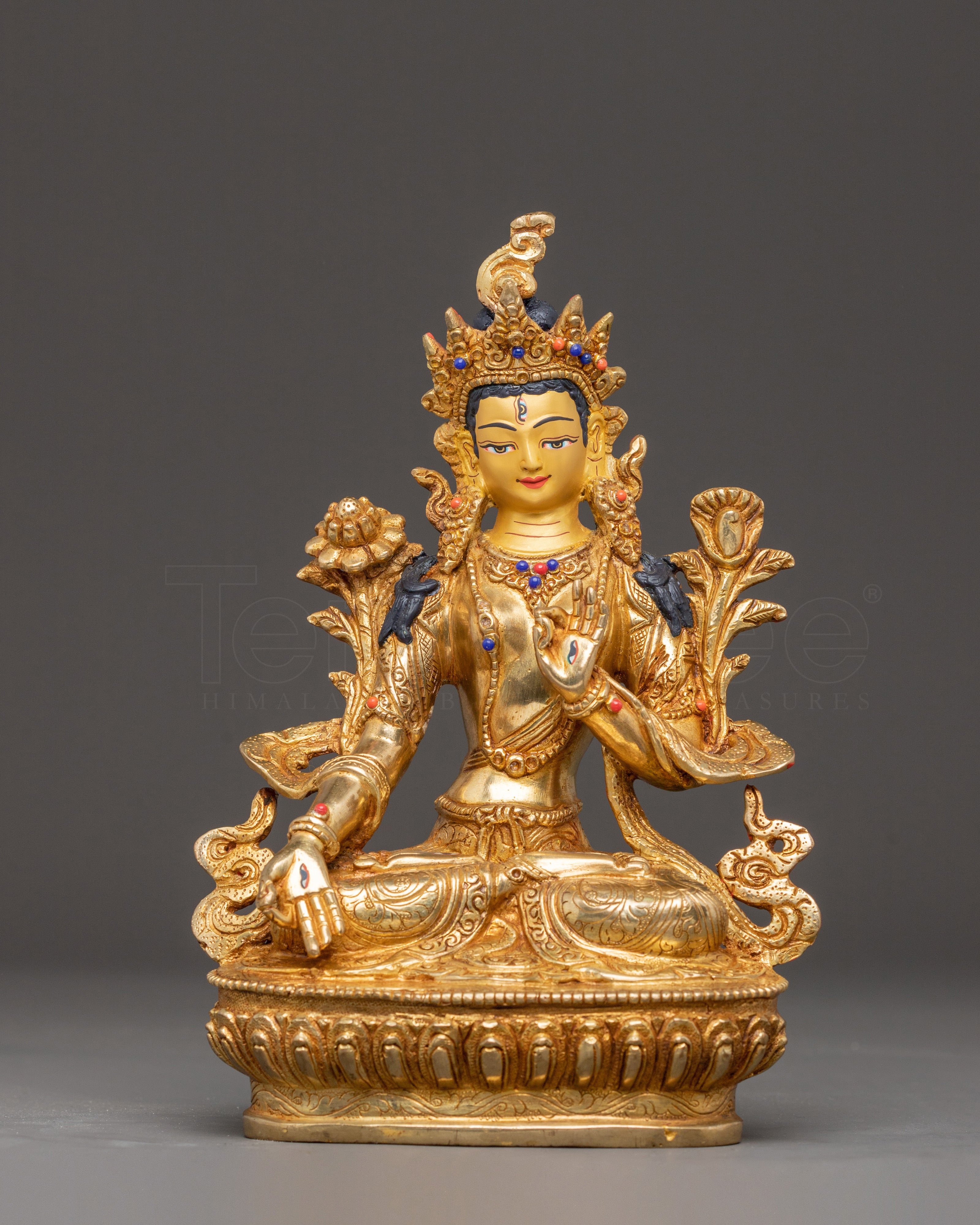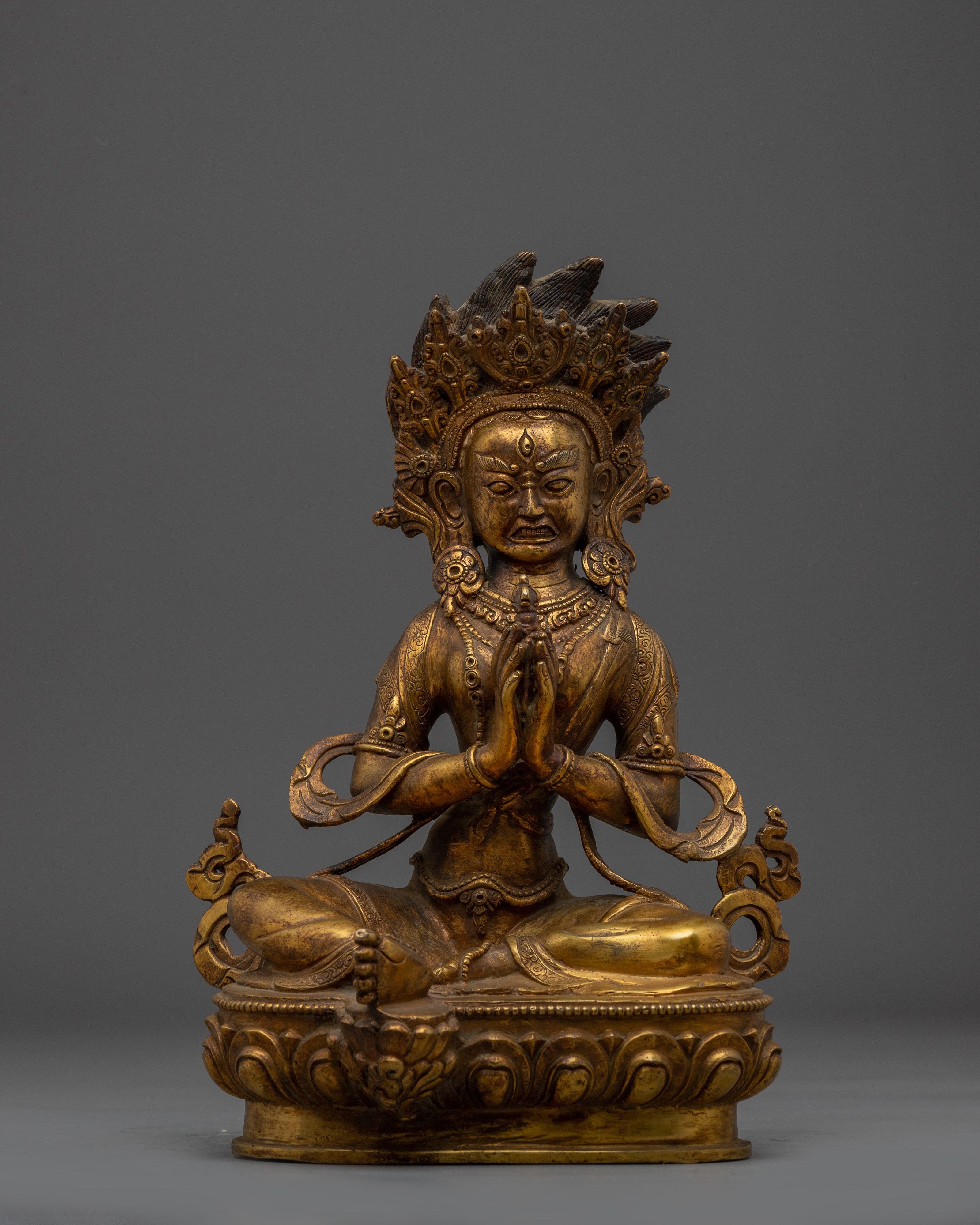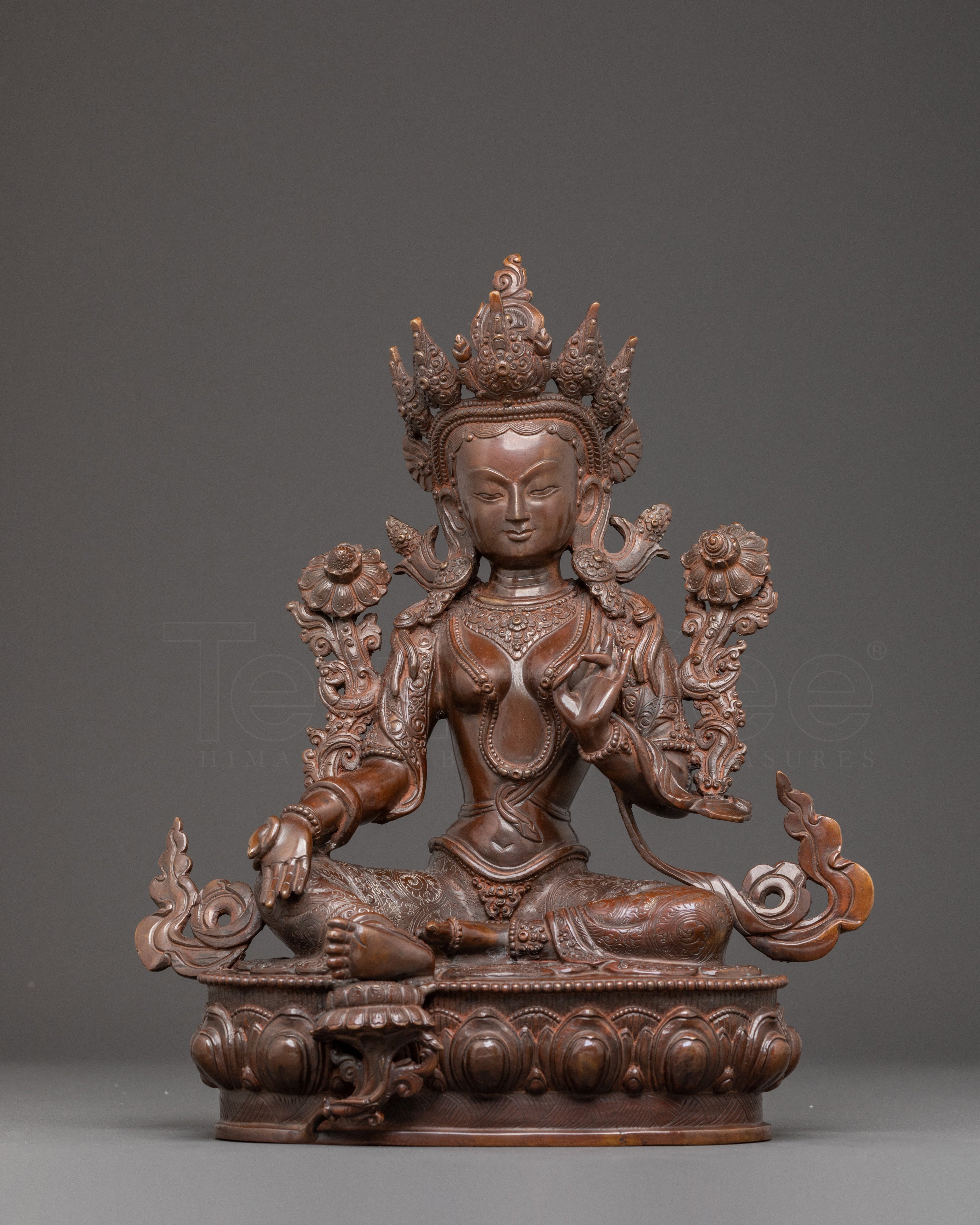Tara Statue Collection
1600 products
Showing 1 - 24 of 1600 products
Embody Compassion and Swift Protection
Welcome to our exclusive Tara Statue Collection, featuring beautifully crafted statues that celebrate Tara: the enlightened mother of compassion and protector of practitioners. Tara’s presence inspires courage, healing, and swift assistance on the spiritual path.
The Significance of Tara in Buddhism
Tara is one of the most beloved female Buddhas in Vajrayana Buddhism. She manifests in many forms, each embodying specific qualities like compassion, protection, and wisdom. Whether invoked for removing obstacles, healing, or guidance, Tara’s energy is swift and nurturing.
Explore Our Diverse Range of Tara Statues
Our collection includes statues of different Tara forms, meticulously handcrafted to bring out their unique qualities:
-
Green Tara: Known as the “Mother of Liberation,” she is the swift protector who removes fear and aids in overcoming worldly and spiritual obstacles.
-
White Tara: The embodiment of long life and healing, White Tara is invoked for health, longevity, and compassion.
-
Other Tara Forms: We also offer statues of Red Tara, Yellow Tara, and various regional manifestations, each with distinct iconography and spiritual significance.
Crafted with Authenticity and Devotion
-
Traditional Hand-Carving: Each Tara statue is skillfully hand-carved by expert Nepali artisans, preserving authentic Buddhist iconography.
-
Materials and Finishes: Choose from bronze, brass, resin, or gold-plated finishes, available in multiple sizes to suit personal altars or larger shrines.
-
Accurate Symbolism: Every detail—from hand mudras to lotus thrones—is rendered with care to ensure spiritual correctness.
Why Add a Tara Statue to Your Altar?
-
Compassion and Protection: Tara statues invoke her compassionate energy, offering protection and swift aid.
-
Healing and Longevity: Particularly White Tara statues bring blessings of health and long life.
-
Spiritual Inspiration: Tara inspires practitioners to cultivate kindness, wisdom, and courage.
-
Beautiful Sacred Art: Beyond spiritual benefits, Tara statues are exquisite pieces of Himalayan sacred art.
Who Can Benefit from Owning a Tara Statue?
-
Practitioners devoted to Tara’s practice who seek a physical focus for meditation and rituals.
-
Collectors of Buddhist sacred art and Himalayan handicrafts.
-
Anyone wishing to bring protective and compassionate energy into their home or sacred space.
-
Temples and meditation centers for authentic Tara icons.
Our Commitment to Quality and Service
-
Handcrafted Authenticity: Directly sourced from Nepali artisans maintaining centuries-old traditions.
-
Free Worldwide Shipping: We ship all Tara statues insured and free of cost globally.
-
Customer Support: Our team is here to guide you in choosing the perfect statue to fit your practice and space.
Begin Your Journey with Tara Today
Browse our exclusive Tara statue collection and welcome the blessings of compassion, protection, and healing into your spiritual life. Each statue is a sacred companion for your path.

